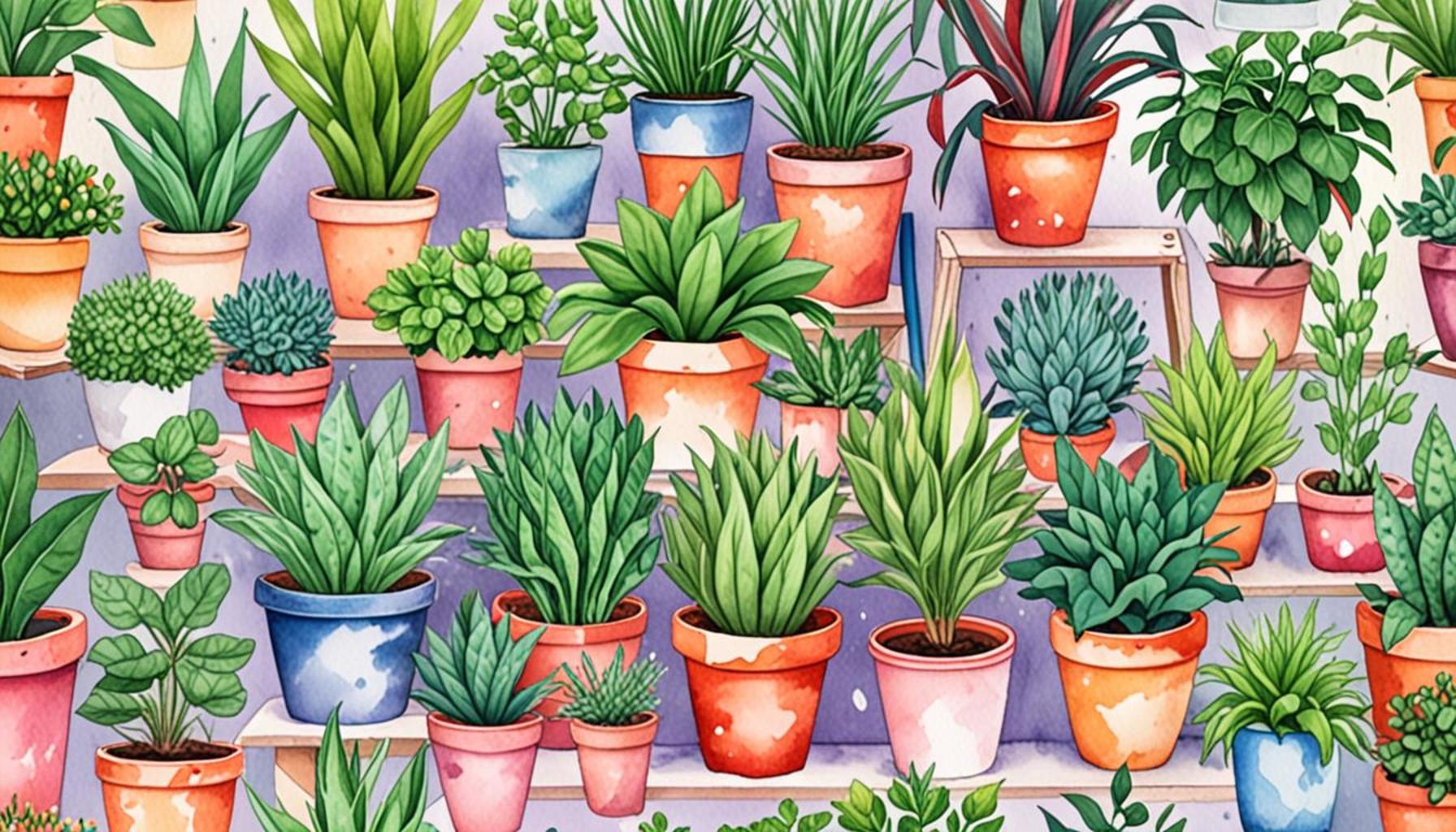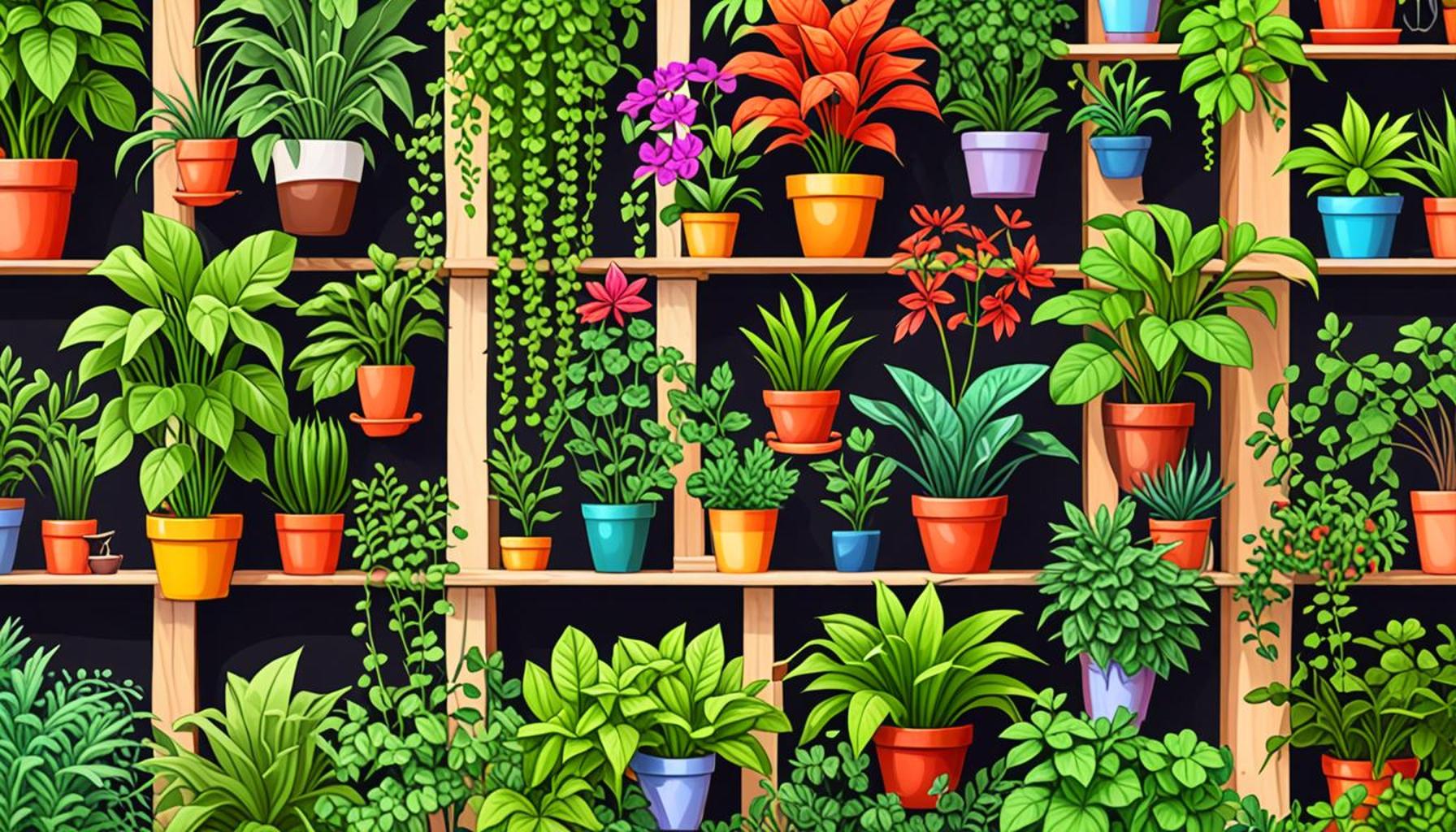How to Choose Aromatic Plants for Beginners: Tips for Growing an Herb Garden at Home

Creating an Invigorating Herb Garden
Embarking on the journey of growing your own herb garden is not just a means of gardening; it’s an invitation to explore flavors, develop culinary skills, and embrace a lifestyle enriched by the beauty of nature. The enticing aromas of freshly grown herbs can elevate your everyday cooking, transforming simple meals into gastronomic delights. For novices, navigating which aromatic plants to cultivate often presents a challenge, but it can be simplified with essential insights. With the right knowledge and a little planning, anyone can create a flourishing herb garden that not only adds zest to dishes but also nurtures the soul.
Factors to Consider When Selecting Aromatic Plants
Building a successful herb garden requires thoughtful consideration of several key factors:
- Climate Compatibility: Each herb comes from a unique geographic region with its own climate requirements. Before planting, research which herbs thrive in your local environment. For instance, if you live in a warmer area such as Southern California, herbs like oregano and rosemary will flourish, while colder regions, like the Northeast, might be better suited for herbs such as thyme or chives.
- Space Requirements: Understanding the space you have available is crucial. Herbs can adapt to various settings—whether you have an expansive backyard or a small balcony, container gardening is a brilliant solution that allows versatility. Choose pots that are at least 6 inches deep to provide ample room for roots to grow. Hanging planters can also maximize vertical space and introduce an attractive aspect to your home décor.
- Culinary Uses: Select herbs based on your culinary preferences. If you frequently cook Italian food, basil and rosemary will be indispensable, while mint and cilantro may suit those who enjoy dishes from Mediterranean or Asian cuisines. This approach ensures that you cultivate plants that will contribute significantly to your dishes.
Beginner-Friendly Aromatic Plants
Here are four beginner-friendly aromatic plants, each with unique flavors that can elevate a myriad of dishes:
- Basil: Renowned for its sweet and peppery flavor, basil is a must-have for tomato sauces, salads, and even as a fresh garnish on pizzas. It thrives in warm weather and can be grown easily in pots or garden beds, making it a favorite among novice gardeners.
- Parsley: This versatile herb adds freshness and color to countless dishes, from soups to salads. With its ability to adapt to various growing conditions, parsley is an excellent option for beginners who might face fluctuating weather.
- Mint: Known for its cooling flavor, mint can be used in both sweet and savory dishes, as well as refreshing beverages like mojitos or iced tea. Mint is vigorous and can quickly spread, so consider planting it in a designated container to control its growth.
- Cilantro: A staple in many international cuisines, cilantro thrives in cooler weather and is perfect for salsa, curries, and salads. Its fresh taste can elevate a dish and provides a welcome variety to your herb garden.
Integrating aromatic plants into your home garden not only enhances your meals but also creates a serene ambiance through the calming scents of nature. As you embark on this thrilling gardening adventure, embrace the learning process and be patient. In no time, your little patch of green will yield a bounty of flavors, adding joy and spice to your culinary creations.
DISCOVER MORE: Click here to learn how to use essential oils for a pest-free garden
Essential Tips for Selecting Aromatic Plants
Choosing the right aromatic plants is the foundation of a successful herb garden. As a beginner, understanding the essential tips that can guide your selection process can save time, effort, and potential disappointment. Here are several considerations to keep in mind when embarking on your herb gardening adventure:
- Growing Season: Herbs have specific growing seasons, and knowing when to plant them is vital. Many herbs prefer warmer temperatures and can be planted after the last frost. Others, like cilantro and chives, thrive in cooler conditions. Timing your plantings with seasonal changes ensures optimal growth and flavor development.
- Soil Conditions: The type of soil used can have a profound impact on the success of your herb garden. Most aromatic plants prefer well-draining soil enriched with organic matter. Conduct a soil test to determine its pH level and nutrient content. A slightly acidic to neutral pH, around 6.0 to 7.0, is ideal for most herbs.
- Watering Needs: Different herbs have varying water requirements. For instance, rosemary prefers drier conditions, while basil likes consistent moisture. Understanding the water needs of your chosen plants helps prevent overwatering or underwatering, which can lead to plant stress or disease.
- Pest and Disease Resistance: Some herbs are more resilient to pests and diseases than others. Researching these qualities can simplify maintenance and yield a more robust garden. Plants like lavender and oregano are known for their natural pest-repelling abilities and tend to be less susceptible to common threats.
With these fundamental considerations in mind, you’re ready to craft a shopping list of aromatic plants that pique your interest. However, it’s equally important to remember that with gardening comes a level of trial and error. Don’t be afraid to experiment with diverse herbs, as each offers a unique sensory experience in your culinary creations.
Understanding the Maintenance of Aromatic Plants
Maintaining your herb garden can become an enjoyable ritual as you nurture your plants to maturity. Start small by monitoring the growth of a few selected herbs. Be attentive to their needs regarding sunlight, water, and fertilizer. Aromatic plants not only require care but often reward you with rich fragrances that can transform the ambiance of your kitchen and surrounding area.
In addition, pay attention to how each herb responds as the seasons change. Some, like thyme and oregano, can endure a hearty freeze, while others may need to be brought indoors during harsher weather. As you learn their responses to different conditions, you’ll cultivate not just plants, but a greater appreciation for the art of gardening itself.
| Category | Benefits |
|---|---|
| Herbs for Easy Maintenance | Choosing herbs such as basil, parsley, and chives, which require minimal care, makes the journey into herb gardening simple and rewarding. |
| Aromatic Properties | Herbs like rosemary and thyme not only enhance the flavor of dishes but also provide health benefits such as antioxidants and natural aroma, promoting well-being. |
Growing an herb garden at home can be a fulfilling experience for beginners. Start by understanding the climate and light requirements for different herbs; many, like mint and oregano, thrive in sunny spots. Soil quality is paramount as well. Using a mix that provides drainage prevents root rot, ensuring your herbs flourish.Consider starting plants from seeds. This is a cost-effective method, but for quicker gratification, you may choose to buy young plants from a nursery. Remember, some herbs like dill and cilantro tend to bolt in heat, so planting in cooler seasons can yield better results.Moreover, regularly harvesting your herbs not only prevents them from going to seed but also encourages new growth. Ensure you’re familiar with the right timing and techniques for cutting, which can differ among various plants. The rewards of nurturing aromatic plants go beyond even their culinary uses; they are also a joy to the senses while providing a peaceful home environment.
DISCOVER MORE: Click here for expert tips
Choosing the Right Herbs for Your Needs
In addition to understanding the fundamentals of selection and maintenance, another pivotal factor in establishing an aromatic herb garden is identifying the right herbs based on your personal needs and preferences. This involves considering your cooking style, culinary interests, and even health benefits that specific herbs offer. Here are some guidelines to assist you in making informed choices:
- Culinary Utility: Think about the dishes you frequently prepare. If you’ve got a penchant for Italian cuisine, herbs like basil, oregano, and parsley can add authentic flavors. For those who enjoy Asian cooking, cilantro and lemongrass are invaluable. Choosing herbs that you will use consistently ensures that your gardening efforts translate into flavorful meals.
- Health Benefits: Many aromatic plants offer remarkable health benefits. For example, sage is known for its anti-inflammatory properties, while peppermint may aid digestion and soothe headaches. Research the health benefits of common herbs to select those that best align with your health goals, allowing your garden to double as a source of culinary delight and natural remedies.
- Outdoor vs. Indoor Growth: Ideally, some herbs perform well in outdoor settings while others are better suited for indoor gardens. For example, chives and parsley can thrive in pots on a sunny windowsill, making them perfect for indoor cultivation. Herbs like rosemary and thyme can flourish outdoors as long as the climate suits them. Plan your choices based on your available space and growing conditions.
- Growth Habit: Consider the growth pattern of the herbs you choose. Some, like mint, can be invasive and overtake their neighboring plants if not contained, whereas others, like basil, will grow bushily but require regular harvesting to promote growth. Understanding their growth habit will enable you to plan your garden layout, ensuring a harmonious relationship among your plants.
Once you’ve determined which herbs tick the right boxes for you, consider planting a few varieties that complement each other. For instance, pairing basil with tomatoes in your garden not only aesthetics but also enhances flavor through the shared growing environment. Herbs often thrive in proximity, creating a mini-ecosystem that can keep pests at bay and promote healthier growth.
Sources for High-Quality Seeds and Plants
Securing quality seeds and plants is another crucial aspect of beginning your herb garden. While many local nurseries and garden centers offer a selection of herbs, exploring organic nurseries and seed companies can yield a more diverse assortment. Look for sources that specialize in perennial herbs, as these can yield returns year after year. Not only do organic seeds tend to be more resilient, but they also promote healthier soil and less pesticide use in your ongoing gardening efforts.
Online market platforms such as Etsy or specialized gardening websites can also provide rare and heirloom varieties that may not be available locally. Engaging with local gardening communities, either online or through local meetups, can also provide insight into where to find quality plants and seeds within your area.
In your journey to establish a successful herb garden, integrating these tips into your selection process can simplify your gardening experience. Each herb variety you choose reflects your unique tastes and aspirations, transforming your cooking and enhancing your culinary adventures.
DISCOVER MORE: Click here to learn about the benefits of native plants
Conclusion: Embracing the Art of Herb Gardening
Establishing an aromatic herb garden is a rewarding endeavor that combines personal preferences, culinary aspirations, and the joys of nurturing nature. As we’ve explored throughout this article, selecting the right herbs starts with understanding your culinary style, identifying the health benefits that various plants offer, and choosing the appropriate environment for growth. By thoughtfully considering these factors, beginners can set the foundation for a thriving herb garden.
The journey of growing aromatic plants at home not only elevates your cooking with fresh flavors but also fosters a deeper connection to your food and its preparation. By selecting herbs that suit your palate—whether it’s vibrant basil for Italian dishes or refreshing mint for cocktails—you create not only a garden but a versatile culinary resource that enhances everyday meals.
Moreover, investing time in sourcing high-quality seeds and engaging with local gardening communities opens doors to a wealth of knowledge and support. The thrill of discovering rare and heirloom varieties can inspire creativity and diversity in your herb selections, allowing you to experiment and grow with confidence.
As you embark on this green journey, remember, the success of your herb garden lies in your passion and commitment. With each herb you cultivate, you bring life and flavor to your home while enjoying the numerous benefits that come from growing your own aromatic plants. So grab your gardening tools, and dive into the enriching world of herb gardening—where the possibilities are as vibrant as your garden itself!


